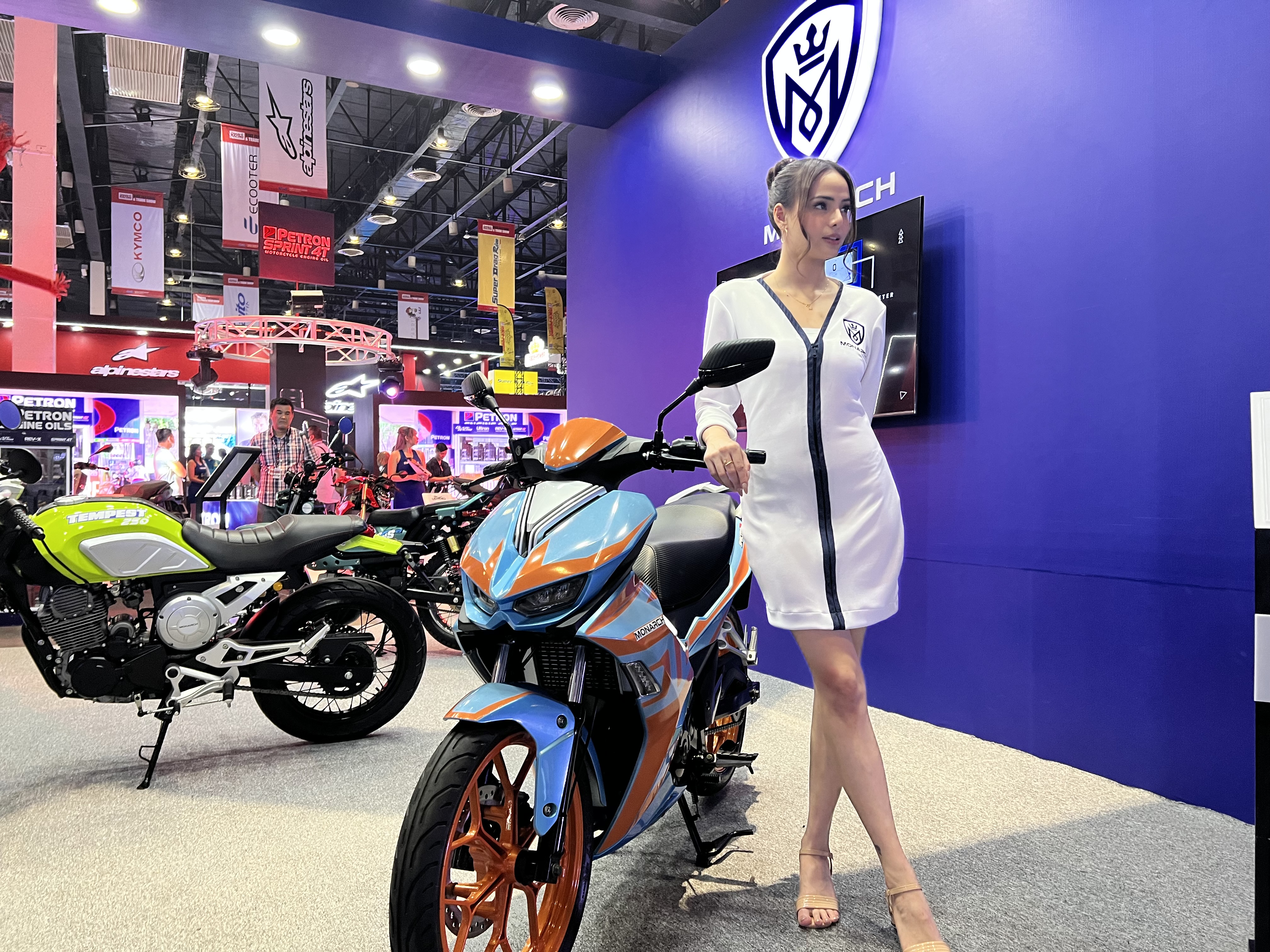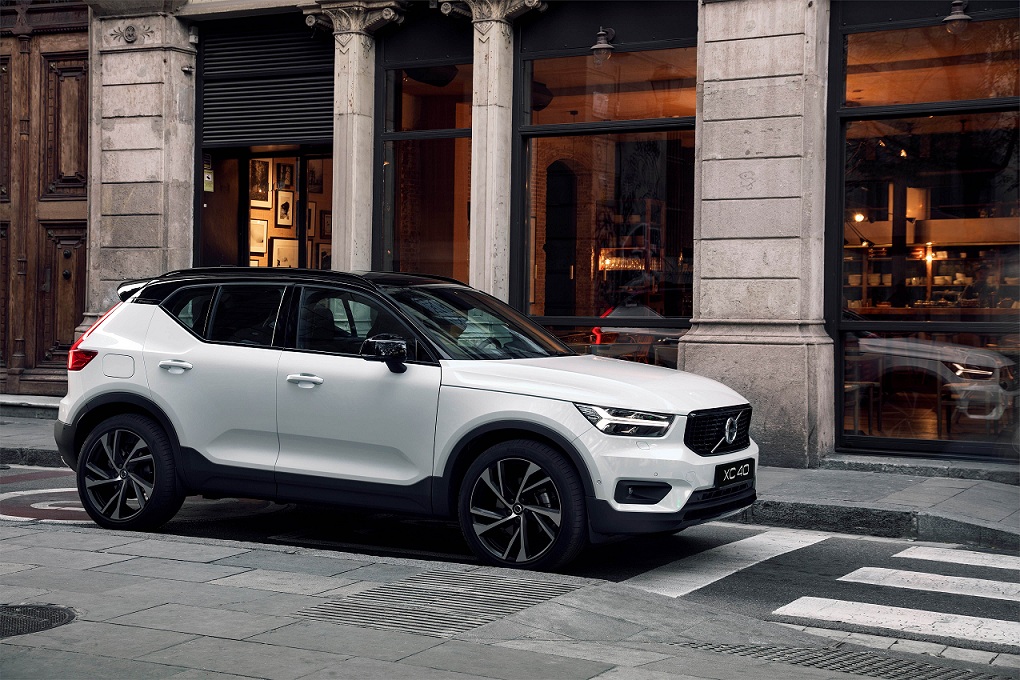Maserati MC20 is the first of its kind, depicts a new era for the Trident brand | Motourismo
Modena Motorsports, Inc., – the official and local importer and distributor of Maserati in the Philippines – set forth the MC20 for Filipino car enthusiasts. MC20 is “First of its Kind” and Maserati returns to a stage where it has always starred, that of Supercars that combine luxury and performance with the Brand’s unique style.
The MC20 is a Maserati with mind-blowing aerodynamic efficiency. Its superb looks conceal an uncompromisingly sporty soul, with the new 630 horsepower V6 Nettuno engine that delivers 0-100 km/h acceleration in 2,88'' and a top speed over 326 km an hour. A patented, 100% Maserati engine, benefiting from the MTC (Maserati Twin Combustion) technology, the innovative combustion system developed by the Brand, evolved from the pre-chamber technology used on Formula 1 powertrains. Conceived, designed and built entirely in-house.
MC20 is a Maserati built to stun, a Maserati that can storm round the track but also perform superlatively on the road, with excellent driveability, comfort and safety, in an interior where efficiency combines with the luxury and exclusiveness integral to all the Brand's models.
MC20 has been designed in Modena at the Maserati Innovation Lab and is produced at the historic Viale Ciro Menotti plant.
Best in class: weight/power ratio
The MC20 is particularly light under 1,500 kg, and thanks to its power output of 630 hp it is best in class in weight/power ratio, at 2.33 kg/hp. This light weight has been achieved without any skimping on comfort: MC20 has all the contents cars of this type must have to satisfy a sporty yet sophisticated clientele, looking not only for performance but also for comfort and luxury. So a great deal of work was done on the materials. The entire chassis is in carbon fibre and composites, with the benefits of lighter weight, faster tool-go times and greater stylistic freedom in the design of forms. Carbon fibre enables the creation of shapes impossible with press-formed metal. The butterfly doors are a very obvious example.
Refined aerodynamics
Over two thousand man-hours in the Dallara Wind Tunnel and more than a thousand CFD (Computational Fluid Dynamics) simulations have enabled the creation of a car with refined aerodynamics which is also a genuine work of art. Elegant and sporty, efficient and lightweight. Unmistakable. Conceptually, the MC20's aerodynamic design divides the car into two parts: an upper part where stylistic considerations predominate and a more technical lower part, colour-coded in black and carbon fibre respectively. In the car's upper section, the forms respond primarily to aesthetic priorities and the aerodynamic features are amalgamated into the lines conceived by the designers, to achieve high efficiency without interfering with the sleek, elegant bodywork. The air vents on the bonnet and those at the side that provide the engine's air intake and cool the intercooler are thus "natural" features, virtually invisible when the car is viewed from some angles. What's more, there are no obvious aerodynamic appendages: just a discreet rear spoiler that enhances the up-washing generated by the floor and enhances the downforce with no detriment to the car's great beauty.
In the lower part of the MC20, on the other hand, the technical component takes control. The front air ducts have been optimized to ensure efficient air distribution across the radiators and the car's floor and upper part.
Special attention was also taken over the correct management of heat flows.
The floor is completely encased and was the subject of complex design analyses to maximize the car's aerodynamic efficiency.
Its front incorporates an elaborate system of vortex generators, rendered even more effective by the distinctive hump shape of the floor, which gradually rises in the centre, in the area level with the wheels, to increase the air flow to these devices, before reconnecting to the chassis bed.
The venting channel in the area behind the front wheel starts near the point where the hump reaches its greatest extent and continues right along the side, generating a considerable vertical load in line with the front axle due to the expulsion of the air flowing from the bottom and the wheel arch.
The incorporation of this highly racing-derived feature implied a special conformation for the carbon fibre monocoque, the wheel arch and the doors, as was also the previously case on the MC12.
The door sill air ducts, located immediately in front of the rear wheels in a zone with natural overpressure, enable the necessary air flow through the engine compartment without impacting resistance.
To conclude, the rear part of the floor of the car includes a large diffuser, with channels of different depths and optimized vertical spoilers that exploit the pressure differences between the various sections to generate vortices and energize the air flow.
Thanks to the almost obsessive care taken over the development of all these features, and the ceaseless hard work to integrate technical factors with aesthetic demands, the MC20 generates a high aerodynamic load with an excellent drag, enabling it to reach top speeds over 326 km/h and continue to hug the ground in all conditions of use.
A monocoque for three
The monocoque, in composite material, is a concentrate of technology and performance. The design of the carbon fibre monocoque has been achieved through the partnership between Maserati and Dallara, both leaders in the design and construction of racing sports cars.
The monocoque has been developed from the outset for all three types of car to be produced in the coming years: the coupé, the convertible and the future electric version, to be presented in 2022. The monocoque’s architecture and geometry are the same for all three versions, but differ in the distribution of the carbon fibre and layers, to provide monocoques with different structural characteristics for the three different types of car: the focus for the coupé will be on light weight and performance; the convertible demands greater torsional rigidity due to the absence of a roof; and the electric version will have more overall strength and enhanced protection for the battery area. Therefore, a single design embraces three versions, through changes only in the type, quantity and arrangement of the carbon fibre.
Suspension
The very compact front suspension features a double wishbone with semi-virtual steering, two bottom links and one top link. The same semi-virtual layout is adopted on the rear suspension, one of the very few cases of this application on the market today. The use of semi-virtual suspension allows the tyre's contact patch to be kept constant while cornering, ensuring high lateral accelerations and keeping handling natural and instinctive in any situation and at any speed.
Transmission
The automatic transmission is an 8-speed oil-immersed Dual Clutch design with 6 power and two overdrive speeds to ensure emissions compliance.
Virtual development of the car
97% of the car's development was performed virtually, using the system known as Virtual Vehicle Dynamics Development, developed by Maserati itself and based on a very complex mathematical model called Virtual Car, into which every conceivable parameter is entered.
Virtual development reduces delivery times and allows the optimal technical solution to be identified faster and with lower costs. For example, it is possible to assess 3 different shock absorber solutions and thus choose the most suitable within a short period of time.
The final tuning takes place on the track and on the Apennine mountain roads above Modena.
The Nettuno engine
The new Nettuno engine is the result of a technical revolution, one protected by international patents. The project was born from the passion and commitment of a team of highly-qualified technicians and engineers. After twenty years, Maserati has once again enthusiastically taken on the challenge of returning to its Modena HQ with the development and production of a new, highly-technological, high-performance engine.
The operation is a strategic one for Maserati, a brand that, today, is preparing to launch the new MC20, a project that is ‘100% Made in Modena’ starting right from its engine, the heart of the new car. An ambitious design, which represents a historic moment for the company.
The new power unit is a V 90° architecture, with a 3-litre, 6-cylinder twin-turbo, and features a dry sump (a classic solution on super sportscars). It delivers 630 hp at 7,500 rpm and 730 Nm of torque from 3,000 rpm with a specific power output of 210 hp/litre.
The compression ratio is 11:1, the stroke is 82 mm and the bore 88 mm.
The soul of the engine is the innovative pre-chamber combustion system featuring twin-spark plugs. This technology is derived from Formula 1 and is now available, for the first time, on an engine destined for the road.
The engine has three main features:
The pre-chamber: a combustion chamber is set between the central electrode and the traditional combustion chamber and connected by a series of specially-designed holes.
Lateral sparkplug: a traditional sparkplug acts as a support to ensure constant combustion when the engine is operating at a level that doesn’t need the pre-chamber to kick in.
Twin injection system – direct and indirect: linked to the fuel supply pressure at 350 bar, the system reduces noise low down on the rev range, lowering emissions and improving consumption.
It is strategically important and supported by the Innovation Lab, which, thanks to virtual analysis, has allowed development and planning times to be notably reduced.
The new “Made in Modena” engine, a traditional 90° V6, has been taken to unheard of power and torque levels and will be used for the first time on the MC20 super sportscar. The MC20 will take Maserati back to the world of racing.
MC20: technological features
The driving seat controls of the MC20 are essential, functional and rational. The entire focus is on the driver, and his desire for optimal performances. Everything is designed to help him to get the most out of his Maserati, without distracting him. So shapes are simple, with very few sharp corners. The materials chosen are black and the upholstery is dark, to prevent reflections in the windscreen. Everything is laid out just like the cockpit of a racing car, with functionality and visibility paramount.
The central tunnel is clad with carbon fibre and only carries the switches that are absolutely necessary, to maintain concentration on the driving experience and sustain the approach of elegant minimalism with which the MC20's interior was styled.
The most luxurious detail is the driving mode selector: in centre stage, it is the distinctive feature that tells the driver and passenger they are on board a Maserati.
Inspired by a luxury watch, the driving mode selector is mechanical and precise, it is made from choice quality, exquisite materials and it has a touch of typically Maserati dark blue. It evokes the luxury that embraces anyone getting into a Trident brand car. The styling of the driving mode selector to resemble a luxury watch was a symbolic decision, since the MC20 does not have the trademark Maserati analogue clock on the instrument cluster.
The sport steering wheel
The steering wheel was developed and designed with input from Andrea Bertolini, Maserati Corse test driver and former World Champion in the MC12. A thick steering wheel was chosen to maximise ergonomics and the sporty "feel". Only essential buttons and switches are provided, including the Start and Launch Control buttons. MC20 is the first new-generation Maserati to have the ignition button on the steering wheel, another symbol of this car's extremely sporty character. The Start and Launch Control are integrated in the steering wheel's central surround. The steering wheel is covered in black leather with carbon fibre inserts. It is also available in Alcantara for those who prefer a more racing ambience.
The easily accessible, generously sized paddle shifters, fixed to the steering column, are available in dark aluminium as standard configuration and in carbon fibre as part of the carbon fibre interior package.
Driving modes
MC20 has five driving modes, selected using the selector in the centre of the tunnel: WET, GT, SPORT and CORSA. Each one is identified by its own colour: WET green; GT blue; SPORT red; CORSA yellow; ESC OFF orange.
Driving modes are selected by turning the selector for a few seconds. For example, the car starts in the default GT mode. It only takes a movement of half a second in the direction of the mode required to switch from GT to SPORT (on the right) or WET (on the left). Or the driver can press the selector for 2 seconds to choose CORSA mode. Pressing for 5 seconds switches to ESC Off mode. The longer time is to ensure that the driver has chosen this mode intentionally and not by mistake.
The five modes are differentiated as follows:
GT Mode (Default driving mode)
GT Mode is the default driving mode, active when the car is started. It is ideal for everyday driving and provides the maximum ease of use and comfort.
• Engine boost: normal
• Pedal sensitivity: normal resistance
• Exhaust valves active: only opened above 5,000 rpm
• Gear shift setting: slow and smooth
• Suspension: soft
• Traction control: normal
WET Mode
WET mode offers the highest level of control on wet or damp road surfaces, to prevent skidding during acceleration or cornering.
• Engine boost: limited
• Pedal sensitivity: normal resistance
• Exhaust valves active: only opened above 5,000 rpm
• Gear shift setting: slow and smooth
• Suspension: soft
• Traction control: all controls active
SPORT Mode
SPORT mode offers the highest performances in high-traction conditions and is ideal for use on the track.
• Engine boost: normal
• Pedal sensitivity: low resistance, high sensitivity
• Exhaust valves active: opened at 3,500 rpm
• Gear shift setting: fast and direct
• Suspension: stiff
• Traction control: sport
CORSA Mode
CORSA mode offers the driver the most extreme experience. Traction control is much less active and stability control is active but with very high thresholds. This mode provides the maximum enjoyment, but also the most challenging handling.
• Engine boost: maximum (maximum power output available at once)
• Pedal sensitivity: low resistance, extremely sensitive and responsive
• Exhaust valves active: always opened
• Gear shift setting: racing
• Suspensions: racing
• Traction control: race
In CORSA mode, the driver can activate the Launch Control using the steering wheel button.
ESC OFF Mode
In ESC OFF, all control functions are deactivated. It is similar to CORSA mode, but with traction control totally deactivated.
Adjustable suspension
A button in the centre of the driving mode selector enables the driver to adjust the suspensions. It is useful in SPORT or CORSA modes when the suspensions are extremely stiff. Pressing the Suspension button makes the suspensions more comfortable and less stiff. This is particularly useful on uneven ground, since it gives the driver a sporty yet comfortable driving experience.
Suspension
MC20 has a double-wishbone suspension system with active shock absorbers. The short spindle semi-virtual double-wishbone layout is used on both front and rear axles. This suspension type ensures the best performances in terms of handling and ride comfort.
The semi-virtual double-wishbone assembly on the front axle guarantees the best control of the steering wheel and the highest degree of steering precision, and it cushions the vibrations transmitted from the road to the steering wheel, to guarantee better overall driver comfort.
All components are in forged aluminium for optimal weight saving.
A vehicle height variator
As an optional, a system is available to raise the vehicle at low speeds, increasing ground clearance when traversing obstacles such as speed bumps or over-steep ramps. The driver can activate the system by pressing the specific button on the steering wheel. When activated, the hydraulic system raises the front axle by 50 mm. The driver can then deactivate the system by pressing the button again. At this point, the car will return to the standard ground clearance.
The system functions up to 40 km/h. If the lift system is activated and the car exceeds 40 km/h, the system is deactivated automatically and the car returns to the normal height above the ground.
Digital rear-view mirror
The digital rear-view mirror is attractively designed without a frame. Images are transmitted by a rear-view camera and increase the driver's visibility by an incredible amount, assisting him in all manoeuvres at the wheel.
MC20: multimedia
MC20 is complete the new generation MIA (Maserati Intelligent Assistant) multimedia system. The heart of MIA the powerful Android Automotive operating system, which offers a completely new, innovative, higher-performing User Experience, with full personalisation to the driver's use preferences. MIA has two screens inside the car: the digital cluster and central display, which are similar in shape and size. Neither too large nor too small, they are perfectly suited to the MC20's functional cabin interior, and facilitate driving comfort since the driver does not have to refocus his eyes when switching his glance between screens.
The 10.25 inch cluster is all-digital with TFT (Thin Film Transistor) display.
The central display, also of 10.25 inches, has HD Resolution of 1,920x720 and touch functions typical of smart screen personal devices. The screen has a special anti-reflection coating to ensure maximum visibility even in direct sunlight.
The effect with the devices switched off is total black, thanks to an innovative optical solution.
Maserati Connect*
Maserati MC20 is always connected thanks to the new Maserati Connect program.
Since MC20 is connected at all times, an eye can be kept on the car's health, and Maserati Connect will alert the driver when a service is due, improving the customer care experience. Maserati Connect also enhances safety and security, with assistance in emergencies and in case of car theft.
With a Smartphone or Smartwatch, drivers can always stay in contact with their Maserati MC20 thanks to the Maserati Connect app; this is also possible from home via their virtual personal assistant (Amazon Alexa & Google Assist).
Through the MIA (Maserati Intelligent Assistant) multimedia system, the Maserati Connect connected services deliver a new experience for the driver and passengers. Thanks to the integrated, connected navigation system, the driver always has the latest traffic information in real time, as well as constantly updated maps. MIA also enables activation of Amazon Alexa services or a Wifi Hotspot inside the Maserati.
The MC20 has included TIDAL's Hifi streaming service which offers the best sound quality available by taking full advantage of the potential of the Sonus Faber Audio System.
*availability may vary from country to country.
Sound system
MC20 is equipped with a 6-speaker Premium Unbranded sound system as standard and with a 12-speaker Sonus Faber high-premium sound system as optional.
The basic sound system comprises 6 speakers:
• 2 tweeters on the door panels
• 2 medium band speakers on the door panels
• 2 woofers on the door panel
MC20: the design
The design of the MC20 was developed at the Centro Stile Maserati in Turin. Underlying the new Trident supercar is the history of a Brand which has both elegance and racing prowess in its genes.
Maserati design is the perfect blend of elegance, sportiness and personality.
The MC20 project strikes the perfect balance between opposites, the ideal trade-off of craftsmanship and engineering, hand-made masterpieces and precision machining, to reconcile the apparently distant, contrasting worlds of on-road motoring and racing.
In this project, tailored beauty and technicality combine, as the car's upper section takes on the form of a hand-made sculpture, while its lower part is sheer engineering.
The project's evolution: from design to presentation
The Centro Stile Maserati's work starts with a product and engineering briefing. Within Maserati, the briefing is debated and shaped to find the best possible trade-off before moving on to the practical phase, which begins with drawings and sketches. The design is developed during the project in continuous dialogue with the engineering side.
After the sketches, which are then translated into mathematical terms, the hand-crafting of the models is very important: in a project like that of the MC20, the manual shaping of the forms plays a crucial role. “We conceive the car almost as a dynamic sculpture," the people at the Centro Stile Maserati explain, underlining the importance of the human factor in the prototype creation process. Once the work on the models is complete, virtual analysis takes over. It is only at that point that the design becomes a render and is submitted for the final approval that marks the end of the creative phase and the start of the finalisation of the forms and then the engineering.
The MC20 is a car with elegant yet very sporty design. Its character and personality are truly eye-catching thanks to the purity of its forms, which seem to have been carved by the wind. In MC20, performance is paramount, and every detail is studied with this aim in mind. Nothing is superfluous, everything has a function.
Aerodynamics had a fundamental role in sculpting the forms of this born-to-run Maserati. Nothing is purely ornamental; there is a reason for every stylistic feature, either aerodynamics or cooling. The massive work in the wind tunnel enabled the design of a car with the sleekest of lines, with no need for a movable spoiler that would have detracted from its form.
The aim of the Centro Stile Maserati was to integrate everything aerodynamics demanded organically, as if the car had evolved naturally. Everything has a purpose, such as the deflector on the door which also completes the line of the wheel arch, while keeping the air flow glued to the car.
The only concession to a surprise effect is the butterfly doors. The car is seen in all its purity of line. The butterfly door enables much easier access to and from the cabin, and also shows off the carbon fibre cockpit, the aerodynamics and the completely unmasked front wheel. It fulfills a practical purpose, by facilitating driver and passenger access, while also enhancing the car's looks and underlining specific details that would otherwise be concealed beneath the outer clothing.
The doors are opened by a push-button from the inside and have sensors to warn of obstructions.
The Maserati MC20 is a project that unites two very different worlds. Its clothing, the bodywork, represents beauty and purity, and the chassis, the carbon fibre lower section, expresses technology and extreme performance. This division is immediately obvious when looking at the new addition to the Maserati family. The upper section of the car conveys strong yet aesthetically harmonious impressions, while the lower part, with its bare carbon fibre, starts from the aerodynamic floor and is rather more aggressively designed, with sharp edges and corners - style seems to take second place to function. The MC20 incarnates a fine balance between these two extremes. The front grille is the linking feature between these two worlds and is rather different from Maserati models of the past. It combines a bare carbon fibre lower part with a body colour top, and its form seems to be composed of two elements.
The front wing is without the three air vents that were a signature feature of Maserati models but which would be pointless here, since the engine is mid-mounted. However, they reappear on the rear window.
Interior: the realm of functionality
The MC20 conveys emotions with its elegant yet sporty line, and leaves the role of pure functionality to the interior. Everything is very rational, almost minimalist, with two 10 inch screens, one for the cockpit and the other, Maserati Touch Control Plus (MTC Plus MIA) centrally located, slanted slightly towards the driver. The tunnel is very plain, with no superfluous ornamentation. It only carries the driving mode selector, two buttons for the gears, the power window controls and the infotainment volume control, and a smartphone pad with wireless charger. All the other controls are on the steering wheel, with the ignition button on the left and the launch control on the right.
Even though every element's function takes priority, the interior is skilfully styled with carbon fibre to express the coming-together of fashion with performance and engineering. The carbon fibre in the interior is matte in finish, for a more tailored, fabric-like look.
Maserati MC20 has two roomy luggage compartments. One at the front of 47 litres and one at the rear of 101 litres.
The new colours for the MC20 are inspired by the past
MC20 is the first Maserati to be painted in the futuristic new Modena plant, the new line equipped with innovative, environment-friendly technologies.
A new range of colours have been invented for MC20 and will remain exclusive to this model. The range comprises six colours: Bianco Audace, Giallo Genio, Rosso Vincente, Blu Infinito, Nero Enigma and Grigio Mistero. Every one of them was conceived, designed and developed exclusively for this car. All the colours were evolved by combining two factors: one is a strong reference to Italian design and workmanship, Italian identity and our local area; the other is an aspect more linked to the Maserati legacy, meaning the Brand's history and the reinterpretation of some historic models.
Behind each colour lies a great deal of development work that combines the coating's leading-edge technology, the brand's origin, legacy (the brand heritage aspect) and a reference to Italian identity, the local area and design.
The colour of the MC20 is not mere colour, it is substance. It is a dynamic colour, originated and inspired by great models of the past:
• Bianco Audace
• Giallo Genio
• Rosso Vincente
• Blu Infinito
• Nero Enigma
• Grigio Mistero
Bianco Audace is the launch colour. It is a yellowish, rather warm white with a bluish mica that subtly evokes the vein patterns of marble. It merges the two colours of the Birdcage, milky white and its dark blue racing colours, distinct in the past yet combined here to create a new stylistic language. The pigments and technology used to develop the paints evoke the gleam of quarried marble, struck by the light of a Mediterranean sunset that calls forth glimmers of orange and blue on the white surface. The concept is that of absolute pure white with these delicate interferences that give the colour a warmth and soul reminiscent of classical sculptures.
Giallo Genio combines the dark blue and yellow of Modena city's colours. It is actually a metallic fusion that expresses power and dynamism. This yellow has an extremely sophisticated blue component that comes alive in natural light.
Rosso Vincente is extremely powerful, conveying the explosive power of a volcano; it is the authentic colour of Italian motorsports. It evokes the red of the Tipo 26, the first racing Maserati in history.
Blu Infinito is less anodised, less high-tech, more vintage, very simple and authentic, clearer and more sporty. It is a very bright, vibrant blue, combined with an iconic colour that identified our MC12. The resulting colour is new, contemporary and high-impact, with an effect resembling a ceramic glaze.
Nero Enigma has a solid, pure identity, deep as ink. It is an absolute black, associated to the Gran Turismo concept, reinforced by an extremely deep, lacquered effect, a kind of Mont Blanc look working through different levels of transparency.
Grigio Mistero refers to the unforgettable Alfieri concept car, presented a few years ago. It is a darkish grey with a highly sophisticated yet aggressive personality. It derives from the idea of the fusion of metal itself, bestowing great fluidity on the surface and the car's forms.
Maserati: the badge new era
The MC20, the car symbolising the Maserati New Era, also introduces a restyling of the Brand's badges. This is not a revolution but rather a decided evolution, which makes the Trident, Maserati’s symbol throughout its history, more contemporary, with more modern, elegant, stylish graphics, while still conserving its history. A large number of small changes make this badge very different from its predecessor, created by the last restyling in 2005.
The arrows at the side are now rounded for greater balance and continuity between the upper and lower sections of the Trident. The distances between the Trident and its dark blue background have been modified for a more dynamic overall effect. This evolution has lightened the oval, both by breaking down the layout of the various features and in terms of colour, removing the red for a more modern, fresher image. The logo thus now comprises just two colours, white and dark blue, which morphs into a very deep shade with a lacquered effect, a colour we may describe as Maserati Blue.
The badges which feature throughout the car, from the steering-wheel to the pillar, wheel caps and front grille, are now all of the same design. The lightning bolt has been eliminated from the pillar badge, which now contains just the Trident.
The Maserati script on the rear of the car is new, simpler and more modern, with a font which will be maintained for the naming of the Brand’s future models.
Both the Trident and the Maserati script have a satiny instead of a glossy chrome finish, giving a more high-tech effect that evokes polished aluminium.
MASERATI MC20 and Made in Italy
The new Maserati MC20 is an engineering and styling masterpiece that opens a new Era for the Brand. With the MC20, Maserati returns to a stage where it has always starred, that of Supercars that combine luxury and performance with the unique Maserati Style.
The new MC20 is the model from which Maserati draws inspiration for the car of the future, 100% made in Italy, fully developed and engineered in Modena. The Italian essence is sought everywhere: from the engine to the design, every detail deliberately speaks Italian.
WATCH














.png)





.jpg)











.jpg)


Comments
Post a Comment